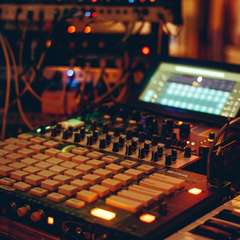Resampling in the Box: How to Create Unique Sounds from Scratch
As a producer, you're always on the hunt for that elusive, one-of-a-kind sound that will set your track apart from the rest. Well, my friends, the secret lies in the art of resampling. Forget about relying on pre-made samples - it's time to get your hands dirty and create your own unique sonic textures from scratch.
Resampling is the process of taking an existing sound and manipulating it to create something entirely new. It's like taking a lump of clay and sculpting it into a masterpiece. The beauty of this technique is that the possibilities are truly endless. Whether you're looking to craft a gritty, industrial-inspired bassline or a ethereal, atmospheric pad, resampling has got you covered.
One of the key advantages of resampling is that it allows you to take control of your sound design process. Instead of being limited by the constraints of pre-recorded samples, you can let your creativity run wild. By layering, pitch-shifting, and applying various effects to your source material, you can unlock a whole new world of sonic possibilities.
For example, let's say you have a simple kick drum sample. By resampling it, you could transform it into a deep, rumbling sub-bass or a glitchy, rhythmic percussive element. The key is to experiment, to push the boundaries of what you think is possible.
But resampling isn't just about creating new sounds - it's also a powerful tool for adding depth and complexity to your productions. By layering resampled elements with your existing sounds, you can create a rich, multi-dimensional texture that will captivate your listeners.
One of my favorite techniques is to resample a simple synth line or vocal snippet, and then use that as the foundation for a new melody or harmonic progression. The result is a unique, organic-sounding element that seamlessly blends with the rest of your track.
Of course, the art of resampling takes time and practice to master. But trust me, the effort is well worth it. Once you start tapping into the power of in-the-box sound design, you'll never look at your DAW the same way again.
So, what are you waiting for? Grab your favorite synth, drum machine, or even a field recording, and start resampling! The only limit is your imagination.
Resampling Techniques to Try
- Pitch-Shifting: Experiment with extreme pitch-shifting to create evolving, otherworldly textures.
- Time-Stretching: Slow down or speed up your source material to uncover hidden rhythmic and harmonic elements.
- Granular Synthesis: Break your samples into tiny grains and rearrange them to create glitchy, atmospheric pads.
- Convolution Reverb: Use impulse responses from unique spaces to add depth and character to your resampled sounds.
- Layering and Blending: Combine multiple resampled elements to create rich, complex soundscapes.
Conclusion
Resampling is a powerful tool that every producer should have in their arsenal. By embracing the art of in-the-box sound design, you can unlock a whole new world of creative possibilities and craft truly unique, one-of-a-kind sounds. So what are you waiting for? Start resampling and let your creativity soar!









